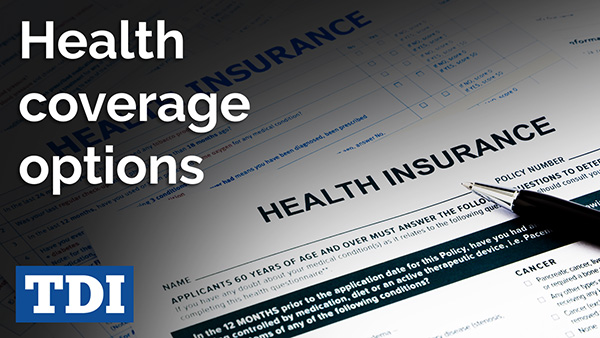Physician assistants have various health insurance options. Each with unique features & benefits. Employer-sponsored plans often provide comprehensive coverage. But understanding The nuances of premiums. Deductibles, & out-of-pocket costs are crucial. Additionally. Individual health plans can offer flexibility. While government-sponsored programs like Medicaid & Medicare may be available depending on specific eligibility criteria. Knowing The differences between HMOs. PPOs, & EPOs help in making informed decisions. Evaluating network restrictions. Prescription drug coverage, & preventative care options ensure The selected plan meets personal & professional needs. Providing essential financial security against healthcare expenses.
Understanding Health Insurance Options for Physician Assistants: A Comprehensive Guide. Discover your best health insurance options as a Physician Assistant with our easy-to-follow guide. Simplify your choices & get The coverage you need today!
Table of Contents
- What is Understanding Health Insurance Options for Physician Assistants: A Comprehensive Guide & How Does it Work?
- Brief History of Understanding Health Insurance Options for Physician Assistants: A Comprehensive Guide
- How to Implement Understanding Health Insurance Options for Physician Assistants: A Comprehensive Guide Effectively
- Key benefits of using Understanding Health Insurance Options for Physician Assistants: A Comprehensive Guide
- Challenges with Understanding Health Insurance Options for Physician Assistants: A Comprehensive Guide & Potential Solutions
- Future of Understanding Health Insurance Options for Physician Assistants: A Comprehensive Guide
What is Understanding Health Insurance Options for Physician Assistants: A Comprehensive Guide & How Does it work?
Understanding health insurance for physician assistants means navigating plan options. Physician assistants need comprehensive coverage. Detailed reviews help make informed choices. Premiums impact financial planning. Coverage breadth affects healthcare access. Knowing benefits and limitations informs smarter decisions.
Brief History of Understanding Health Insurance Options for Physician Assistants: A Comprehensive Guide
Historically. Physician assistants faced complex insurance landscapes. Early plans lacked tailored options. Gradual improvements brought specialized offerings. Recent years saw better benefit packages. Today. Greater transparency aids decisions.
How to Implement Understanding Health Insurance Options for Physician Assistants: A Comprehensive Guide Effectively
Identify suitable insurance plans using available resources. Discuss needs with experienced advisors. Compare coverage details carefully. Look at both premiums & out-of-pocket costs. Verify network providers covered. Review policy exclusions. Ensure voluntary benefits align. Annual reviews ensure current needs are met.
Key benefits of using Understanding Health Insurance Options for Physician Assistants: A Comprehensive Guide
- Quality coverage for medical services
- Financial protection against healthcare expenses
- Access To a broader network of providers
- Improved mental peace through reliable insurance
- Potential tax advantages for certain plans
Challenges with Understanding Health Insurance Options for Physician Assistants: A Comprehensive Guide & potential solutions
- Complex plan options by provider diversity
- High premiums reduce disposable income
- Confusing policy language requiring expert guidance
- Policy exclusions affecting needed treatments
- Limited portability between job changes
Future of Understanding Health Insurance Options for Physician Assistants: A Comprehensive Guide
Future trends suggest personalized & adaptable plans. Technological advances streamline plan comparison. Government policies evolve healthcare standards. Continued focus on mental health benefits observed. Predictions show increased transparency in insurance.

Types of Health Insurance Plans
Health insurance options vary widely. Physician assistants must understand these different plans. Here’s an informative guide To health insurance for more details. Each plan offers unique benefits tailored To different needs.
Health Maintenance Organization (HMO) plans emphasize preventive care services. In-network providers must be used. Out-of-network care often isn’t covered unless in emergencies.
Preferred Provider Organization (PPO) plans offer more flexibility. Network & out-of-network providers can both be used. Out-of-network services may cost more but provide more options.
EmployerSponsored Health Insurance
Employer-sponsored health insurance provides crucial coverage. Physician assistants often receive comprehensive benefits through their employers. Such plans usually include medical. Dental, & vision coverage.
An employer pays a significant portion of premiums. However. Employees contribute through payroll deductions. Many find this cost-sharing model beneficial.
Open enrollment periods allow employees To select their preferred plans. Changes outside this period require qualifying life events. Ensure enrollment during these specified times.
Private Health Insurance Options
Private health insurance serves as an alternative. Individuals not covered by employer-sponsored plans often choose this option. It offers flexibility & various plan choices.
Factors influencing premiums include age. Health status, & coverage levels. Comprehensive plans typically cost more. Comparing multiple plans ensures a better decision.
Online marketplaces provide platforms for comparison. Detailed information about each plan. Including premiums & coverage. Helps make informed choices. Reading customer reviews adds value.
Government Health Insurance Plans
Government health insurance provides essential coverage. Eligibility criteria often depend on age. Income. Or disability status. Medicare & Medicaid serve as key programs.
Medicare caters primarily To those over 65 or with certain disabilities. Detailed information can be found in Medicare & You. Medicaid assists low-income individuals & families. Covering various medical services.
Physician assistants should explore these options. Qualifying individuals can receive significant benefits. Combining these programs with other plans might provide comprehensive coverage.
Choosing The Right Plan for Your Needs
Choosing The right plan requires careful consideration. Understanding personal & family healthcare needs takes precedence. Comparing benefits. Costs, & provider networks become essential.
Monthly premiums & out of pocket costs impact decisions. Lower premiums often translate To higher deductibles & copays. Balancing these factors ensures affordability.
Provider networks play a crucial role. Ensure preferred doctors & hospitals are included in The plan. Quality of care should never be compromised for lower costs.
Understanding Deductibles & CoPays
Deductibles & copays directly impact out-of-pocket costs. Physician assistants must understand these terms. A deductible represents The amount paid before insurance kicks in.
Copays are fixed amounts paid for services. They apply To doctor’s visits. Prescriptions, & other services. Health insurance plans stipulate specific copay amounts.
Balancing lower premiums with higher deductibles/copays suits some. Others prefer higher premiums with lower deductibles/copays. Personal financial situations play a significant part.
Health Savings Accounts (HSAs)
Health Savings Accounts (HSAs) offer unique savings opportunities. High-deductible health plans (HDHPs) must be paired with HSAs. These accounts enable pretax contributions.
Funds in HSAs cover eligible medical expenses tax-free. Physician assistants benefit from reduced taxable income. Unused funds roll over yearly. Providing long-term savings.
Investing HSA funds in stocks or mutual funds grows savings. This option offers potential returns. However. It’s essential To consider associated risks.
ShortTerm Health Insurance Plans
Short term health insurance plans offer temporary solutions. They bridge gaps in coverage for those between jobs or waiting for new plans. Physician assistants might find these plans beneficial during transitions.
These plans typically last between 30 days To 1 year. Though they provide essential coverage. Some services might be excluded. Carefully review plan details To avoid surprises.
While not a long-term solution. Short term plans provide crucial coverage during uncertain times. Consider this option if facing coverage gaps.
Experience SelfNavigation Health Insurance
Personally. Understanding health insurance proved vital. Navigating various plans helped me make informed decisions. As a physician assistant. Such knowledge enhances patient guidance.
Features of Health Insurance Plans for Physician Assistants
- Comprehensive Coverage 🩺
- Flexible Provider Networks 🌐
- Affordable Premiums 💵
- Health Savings Accounts 💼
- ShortTerm Plans ⏳
Coverage for Preexisting Conditions
Coverage for preexisting conditions remains a crucial aspect. Physician assistants must ensure their chosen plans offer this benefit. Affordable Care Act (ACA) mandates such coverage.
Reviewing plan documents clarifies terms & conditions. Plans must not deny coverage based on preexisting conditions. This ensures uninterrupted access To necessary medical care.
Transparency in terms ensures comprehensive understanding. Confirm that all preexisting conditions are covered without additional costs. Doing so ensures peace of mind.
Types of Health Insurance Plans
Health insurance plans vary widely. Physician assistants need The right information. Health Maintenance Organization (HMO) plans limit coverage To certain doctors. Preferred Provider Organization (PPO) plans offer a broader network.
Exclusive Provider Organization (EPO) plans have a smaller network. Point of Service (POS) plans to combine HMO & PPO features. Choosing among these plans requires careful consideration.
Each plan structures costs differently. Monthly premiums & out-of-pocket payments vary. Consider professional needs & personal preferences.
EmployerSponsored Health Insurance
Many physician assistants receive employer-sponsored plans. These plans often come with significant perks. Costs tend To be lower than individual plans.
Understanding what each plan offers is critical. Coverage specifics may differ based on employer size. Large organizations often provide extensive coverage options.
Reading The fine print aids in decision-making. Human Resources can provide detailed plan information. Employers may contribute a portion of premium costs.
Public Health Insurance Options
Public plans offer alternatives for those without employer coverage. Medicaid & Medicare serve different demographics. Medicaid caters primarily To low-income individuals.
Medicare serves mostly seniors & disabled persons. Both programs are comprehensive but have specific eligibility criteria. Public plans may offer essential coverage without exorbitant costs.
Checking eligibility requirements ensures access. Application processes for Medicaid & Medicare may differ. Utilize government resources for accurate information.
Individual & Family Health Insurance
Individual plans offer another route. These are often purchased through state exchanges. Federal subsidies may reduce costs for eligible individuals.
Family plans cover multiple family members under one policy. Comparing plans based on benefits & costs is advisable. Physician assistants should consider family needs & personal circumstances.
State exchanges provide a marketplace for comparing options. Look for plans with features that match your needs. Customer reviews & ratings may offer additional insights.
Comparing Costs & Coverage
Careful cost assessment helps in selecting The best plan. Monthly premiums. Deductibles, & out-of-pocket expenses must align. Comprehensive coverage may offer better long-term savings.
Evaluating networks & covered services can save time. Pay particular attention To specialist coverage & prescriptions. Understanding what will affect your finances is crucial.
Utilize resources such as The University of California Health Benefits Guide. For detailed insights. Refer To The Medicaid Services Administrative Claiming Guide. Resources such as these offer valuable information.
Special Considerations for Physician Assistants
Physician assistants have unique healthcare needs. High-stress work environments necessitate comprehensive mental health services. Coverage for preventive care is also essential.
Consider plans with extensive mental health networks. Look for low copays for counseling & therapy sessions. Preventative care can preempt significant future medical costs.
Occupational hazards also warrant attention. Plans covering work-related injuries offer additional peace of mind. Risk assessment guides better plan selection.
Utilizing Health Savings Accounts (HSAs)
HSAs provide another layer of financial protection. These accounts are often linked To high-deductible health plans (HDHPs). Contributions To HSAs are tax-deductible.
Funds can pay for a wide range of medical expenses. HSAs offer a form of pretax savings for healthcare costs. Balances can roll over year-to-year. Accumulating over time.
Physician assistants benefit from this financial flexibility. Use HSAs for out-of-pocket expenses & long-term savings. Plan contributions ensure funds for immediate healthcare needs.
Network Considerations
Health plan networks dictate your available healthcare providers. HMO plans typically have narrower networks. PPO & POS plans offer more flexibility.
Consider your preferred doctors & hospitals. Evaluate if they are within The plan’s network. Network restrictions can affect access To necessary services.
Check specialist availability within The network. This aspect is crucial for ongoing & specialized care. Networks directly impact health & financial outcomes.
Prescription Medication Coverage
Prescription costs can add up quickly. Find out if your medications are fully covered. High out-of-pocket costs for prescriptions can affect budgeting.
Ensure The plan covers a broad range of medications. Coverage for generic & brand name drugs varies. Formularies list drugs that The insurance plan covers.
Investigate if there are any limitations. Know whether prior authorizations are required. A full understanding of prescription coverage minimizes surprises.
Comparison of Health Insurance Options
| Plan Type | Network Size | Flexibility | Cost |
|---|---|---|---|
| HMO | Small | Limited | Low |
| PPO | Large | High | Moderate |
| EPO | Medium | Moderate | Low |
Personal Experience
As a physician assistant. I once navigated health options solo. Choosing required extensive research & comparison. Eventually. I settled on a PPO plan offering ideal flexibility.

What are The different types of health insurance options available for Physician Assistants?
Physician Assistants can choose from a variety of health insurance options. Including employer-sponsored plans. Individual plans. Family plans. Health Maintenance Organizations (HMOs). Preferred Provider Organizations (PPOs). Exclusive Provider Organizations (EPOs), & HighDeductible Health Plans (HDHPs) with Health Savings Accounts (HSAs). Each type has its own benefits & limitations. Catering To different needs & preferences.
How do employer-sponsored health insurance plans benefit Physician Assistants?
Employer-sponsored health insurance plans are typically more affordable for Physician Assistants because The employer often pays a significant portion of The premiums. These plans may also offer a range of coverage options. Including medical. Dental, & vision care. As well as additional benefits like wellness programs & employee assistance programs.
What should Physician Assistants consider when choosing an individual health insurance plan?
When choosing an individual health insurance plan. Physician Assistants should consider factors such as The monthly premium. Out-of-pocket costs (deductibles. Copayments, & coinsurance). The network of doctors & hospitals. Coverage for prescription drugs, & any additional benefits like mental health services or maternity care. It’s also important To review The plan’s coverage limitations & exclusions.
How can Physician Assistants benefit from a high deductible Health Plan (HDHP) with a Health Savings Account (HSA)?
HighDeductible Health Plans (HDHPs) typically have lower monthly premiums compared To other plans. But higher out-of-pocket costs. By pairing an HDHP with a Health Savings Account (HSA). Physician Assistants can save pretax money To use for qualified medical expenses. This can provide significant tax benefits & help manage healthcare costs more efficiently.
What is The difference between an HMO & a PPO insurance plan?
Health Maintenance Organizations (HMOs) require members To choose a primary care physician (PCP) & obtain referrals To see specialists. They usually have lower premiums & out-of-pocket costs but offer less flexibility in choosing healthcare providers. Preferred Provider Organizations (PPOs). On The other hand. Allow members To see any healthcare provider without a referral. PPOs generally have higher premiums & out-of-pocket costs but offer more flexibility & a wider network.
What are Exclusive Provider Organizations (EPOs) & how do they work?
Exclusive Provider Organizations (EPOs) offer a network of doctors & hospitals that members must use. Except in emergencies. EPOs typically have lower premiums & out of pocket costs compared To PPOs. However, they do not provide coverage for care received outside of The network. EPOs can be a good option for Physician Assistants who want lower costs & do not mind limited provider choice.
How important is it for Physician Assistants To have medical malpractice insurance?
Medical malpractice insurance is crucial for Physician Assistants as it provides protection against claims of negligence or professional misconduct. This insurance can cover legal fees. Settlements, & judgments. Helping To safeguard The professional & financial well-being of Physician Assistants. It’s important To verify whether malpractice insurance is included in employer-sponsored plans or needs To be purchased separately.
What role do networks play in choosing The right health insurance plan?
Networks are crucial in determining The accessibility & cost of healthcare services. A network is a group of healthcare providers & facilities that have contracted with The insurance company To offer services at discounted rates. Physician Assistants should ensure that their preferred doctors. Specialists, & hospitals are included in The network of The chosen health insurance plan To maximize savings & continuity of care.
How do copayments? Do deductibles, & coinsurance impact healthcare costs for Physician Assistants?
Copayments are fixed amounts paid for specific services or prescriptions. While deductibles are The amounts paid out of pocket before The insurance starts To pay. Coinsurance is The percentage of costs shared between The insurance company & The insured after meeting The deductible. Physician Assistants need To carefully consider these factors when choosing a health insurance plan. As they directly affect overall healthcare expenses & The affordability of care.
What is COBRA, & how does it benefit Physician Assistants who lose their job?
The Consolidated Omnibus Budget Reconciliation Act (COBRA) allows Physician Assistants To continue their employer-sponsored health insurance coverage for a limited period after losing their job or experiencing a reduction in work hours. COBRA can be beneficial during transitions between jobs or other life changes. Ensuring that there is no gap in health insurance coverage. However. COBRA coverage can be expensive since The individual typically pays The full premium. Including The employer’s previous contribution.
Understanding Health Insurance Options for Physician Assistants: A Comprehensive Guide
Conclusion
Understanding health insurance options as a Physician Assistant doesn’t have To be overwhelming. By breaking down different plans, assessing your needs, & considering factors like premiums, deductibles, & networks, you can make informed choices. It’s important To regularly review your insurance To ensure it still meets your needs, especially as your career progresses. Taking The Time To understand your options not only provides peace of mind but can also save you money & ensure you get The best care possible. Stay informed & proactive, & you’ll navigate The complex world of health insurance with confidence.

